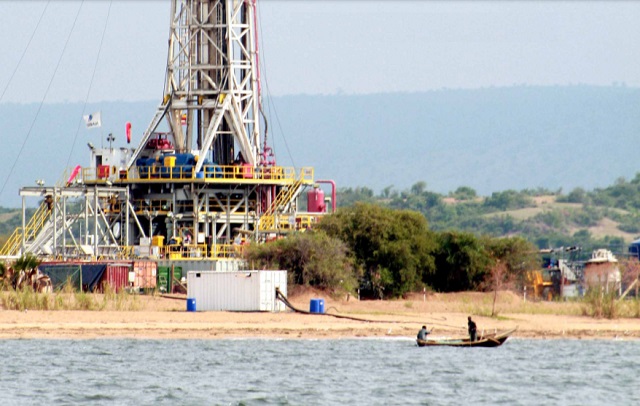
Hoima, Uganda | THE INDEPENDENT | The National Oil Spills Contingency plan has been finalized as oil companies plan for more drilling in the Albertine graben.
URN has reliably learned that the plan developed by the Office of the Prime Minister, National Environment Management Authority-NEMA, and the Ministry of Energy was approved by the cabinet and is now ready for implementation.
Sources at the Energy ministry indicate that the plan should be launched this week by the Prime Minister Robina Nabanjja.
It is expected that implementation will guide the industry players like Total Energies and CNOOC that operate in the ecologically sensitive water bodies like Lake Albert, Rivers Nile, and other rivers like Wambabya and Semuliki.
The threat of an oil spill has also been highlighted as one of the threats to Budongo forest and Murchison National Park. The development of spills contingency plans is rooted in Good International Industry Practice (GIIP) in the oil and gas sector.
The governments are required to put in place preparedness measures including taking steps before an oil spill can occur to reduce impacts to the people and the environment, and the state’s economy.
Some leaders in Bunyoro have in the past urged the government and oil companies to put in place risk management plans to ensure that the likely disasters don’t impact the lives of their people.
Similarly, the planned development of the East African Crude Oil Pipeline close to the shores of Lake Victoria has been internationally opposed due to fear of likely oil spills.
According to the UN Environment Programme, if an oil spill happens in an area with wildlife, the damage can be significant.“ Oil destroys the insulating ability of fur on mammals and impacts the water-repelling qualities of a bird’s feathers, without the insulation or water repelling qualities mammals and birds can die from hypothermia” observes one of the publications.
The National Oil Spills Contingency Plan is provided for under the National Environment Management Act (2019), the National Environment Oil Spill Prevention, Preparedness and Response Regulations 2020, and the National Policy for Disaster Preparedness and Management 2010.
The National Policy For Disaster Preparedness and Management 2010 tasked the ministry of energy to put in place strict and effective mechanisms to avert disasters related to oil exploration, transportation, and use, including environmental degradation
Energy Minister Ruth Nankabirwa recently vowed to ensure that the players in the oil, gas, minerals, and mining sector abide by the set rules on ensuring that the country’s environment is not adversely affected by the development of oil, gas, and minerals. Nankabirwa was touring mining operations in Eastern Uganda early this month.
The National Oil Spills Contingency plan is partly hinged on the polluter pays principal. The oil companies will under the plan be required to clear the damage and compensate affected communities. “The cost of oil spill response operations, including clean-up and restoration cost, shall be borne by the licensee or operator.” reads part of the Environment Social Impact Assessment (ESIA)plan developed by Total Energies and CNOOC, highlighting some of the steps to avoid or mitigate oil spills in case they occurred.
CNOOC Uganda Limited is a subsidiary of China National Offshore Oil Corporation (CNOOC) which operates the Kingfisher field development area, spreading over 344sq.km in the Lake Albert rift basin in western Uganda, and already hired a firm to develop an oil spill plan.
CNOOC’s field development will comprise four well pads, 20 production wells, and 11 water injection wells. The pads will be connected through infield flow lines to a central processing facility capable of producing 40,000 barrels of crude oil a day.
Most of its operations are located on the eastern bank of Lake Albert, which is along the border between Uganda and the Democratic Republic of Congo. Its plan details a tiered response strategy that takes into account the spill risk associated with the nature of the hydrocarbons that could be spilled.
In a related development, TotalEnergies whose project is located in the North-East area of Lake Albert in Uganda has since October last year been developing its Oil Spill Contingency Plan in preparation for drilling phase development planned for mid-2022.
The Nairobi Convention on Oil Spills Uganda is being supported by the Government of Norway to develop National Contingency Plans for Oil Spills and Acute Pollution which include chemical spills.
The experts in the region have since 2017 been urging Uganda and others in East Africa to operationalize/test the National Oil Spill Contingency Plans. The consultations under the Nairobi Convention have asked the countries to harmonize their national oil spill contingency plans with existing regional contingency plans.
*****
URN
 The Independent Uganda: You get the Truth we Pay the Price
The Independent Uganda: You get the Truth we Pay the Price





